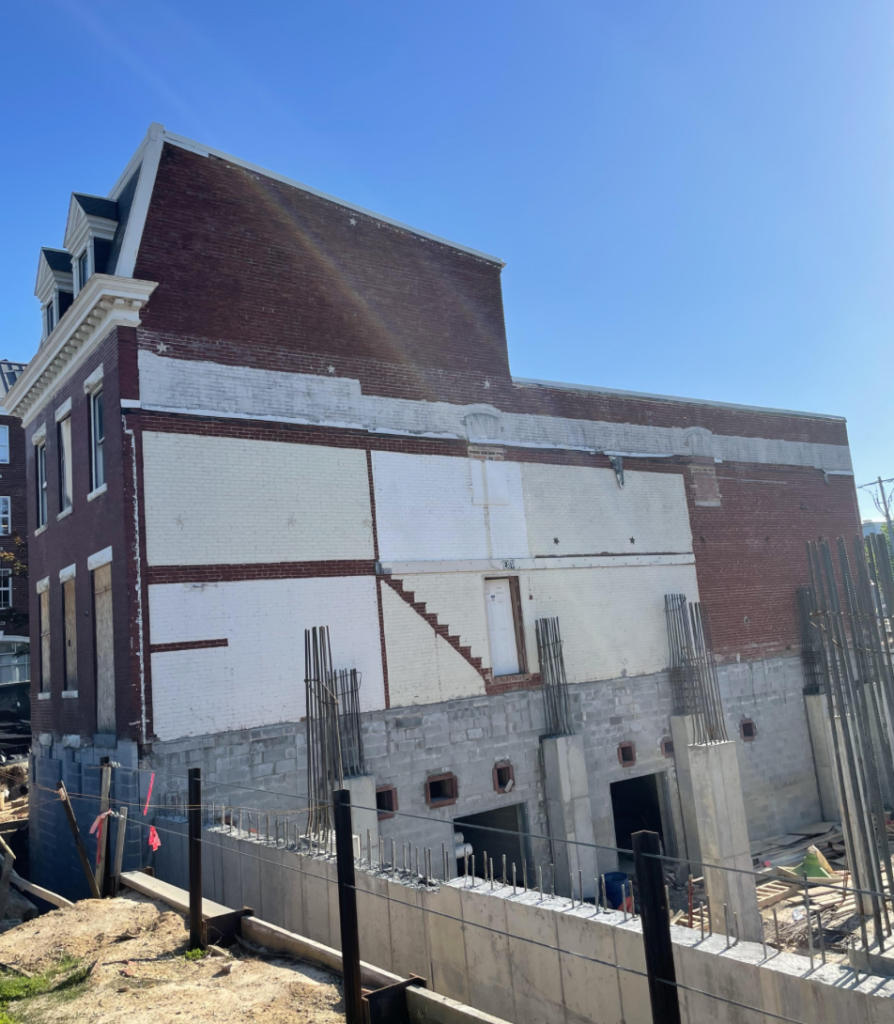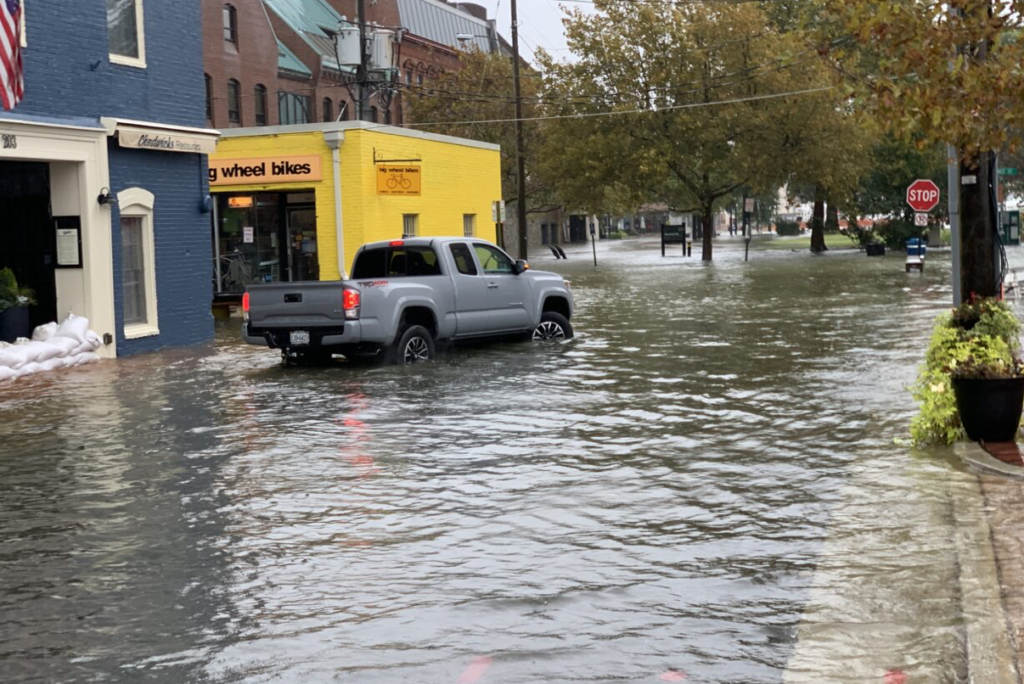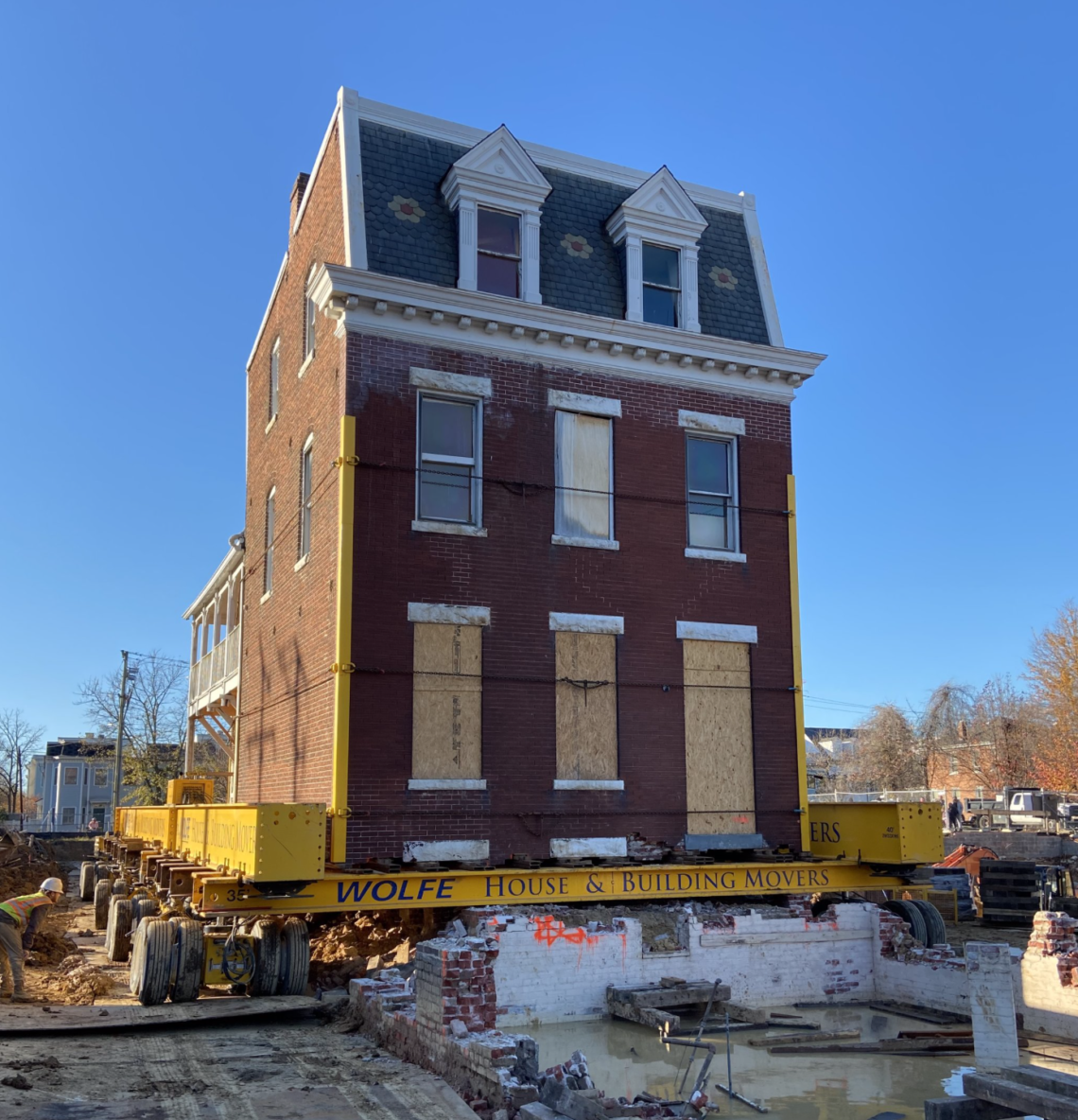Nikki Harris
Editor
New walkways, grassy pavilions, and restaurants in recent years have led to a tourist revival along Alexandria’s Potomac waterfront. But city officials and business leaders know this new energy is threatened by an old problem: chronic flooding that regularly puts big sections of Old Town deep underwater. Although Potomac flooding has been a fact of life in Old Town since pre-colonial days, a combination of climate change and regional development has made the problem more frequent and severe.
Civic leaders in recent interviews with Theogony said they are studying flood-mitigation plans that, if adapted, would spend tens of millions on modern flood-mitigation improvements, while also preserving the historic character of Old Town, where some structures date to the 1700s.
City preservationists, engineers, and business owners described a strategy that seeks to strive a delicate balance between old and new.
–Many Old Town structures as a practical matter are too old to withstand the necessary modifications needed to make them comply with new regulations to counter rising floodwaters. For these structures, the main remedy will be the same minimally effective one that has been used for generations: sandbags stacked high when the waters rise.
–A spate of new buildings in recent years, such as the Old Dominion Boat Club, are built so that when water comes in it naturally flows out, while sensitive areas like kitchens are put on higher floors.
–The main objective is to make flooding less frequent. City officials say this will require massive capital investments, on such projects as much wider storm pipes, to prevent backups in times of heavy rain, as well as physical barriers at key spots along the waterfront to keep the Potomac from rising into Old Town.
Many of the buildings that make up the east side of Old Town date back a couple centuries, and were not constructed to withstand serious flooding. In an interview with Theogony, William Conkey, the Historic Preservation Officer of Alexandria, said the vulnerability that historic buildings in Old Town face is difficult to counter with renovations without sacrificing some of the buildings’ purely original form.
For example, 10 Duke Street is an old warehouse on the waterfront that the Union Army used as a mess house during the Civil War. The Historic Preservation Office determined that it could be deconstructed, brick by brick, and rebuilt exactly as it was at a higher elevation with a foundation that can take stormwater.
This disassembly is the type of compromise that, for some, violates a basic tenet of historic preservation, which is that the fabric of the building must be kept in place. Some community members argued that it is preferable to let the building sink and to build a staircase and entry to the second floor, according to Conkey.
The problem with this approach, in which flooding would be allowed to overtake the first floor of the building, and human activity moved to higher stories, is that the entire structure would be threatened.
“Very porous brick absorbs water, such that it doesn’t take long once it gets wet for it to become irreversibly damaged,” Conkey said.
Such compromises don’t always have to be made. At the intersection of North Washington and Madison streets, a townhouse built in 1890 was temporarily moved within the block for the construction of a parking garage under its foundation. A hotel will be constructed next to it.
“There’s nothing particularly historic about its subgrade structure,” Conkey said. “They asked can we move it if the house is kept exactly the same way. And they’re allowing development to happen, which is important.”

Conkey, who is involved in the city’s efforts to reduce flooding, said the futility of trying to renovate historic buildings without destroying their character leaves the city with few options but to try to protect the city in its entirety from serious flooding, rather than make the buildings within it resistant to stormwater.
Such flood-protection strategies, which are being considered in various flood-mitigation committees in Alexandria, include building an elevated promenade along the river, which would raise the elevation for the river to overflow into Old Town.
This option, too, requires a reconciliation of interests between maintaining the character of the waterfront and protecting it from the river when it overflows. A promenade that is built too high would block the view of the river and defeat the purpose of having a waterfront, said Matthew Landes, Project Implementation Manager of Alexandria.
“If we built too much higher than [at a six-foot elevation] it would really dynamically change the experience and character of the waterfront,” Landes said. “For example, a traditional method of flood mitigation is to build giant levies. If giant levies or flood walls were constructed in a permanent way, that would dramatically change the character of the waterfront in ways that I think would hurt almost everyone.”
Other flood-mitigation strategies, such as storm sewer renovation, don’t require nearly as much sacrifice of Old Town’s ethos as waterfront elevation or building modernization. The city has applied for a $50 million grant from FEMA; whether it’s approved will be critical in determining which tactics the city chooses to adopt, Landes said.
New development must be built at a six-foot elevation, but older buildings are usually exempt from this requirement, including Chadwicks, a restaurant that sits on Strand Street, at the bottom of Old Town. Its building was built in 1792, and it qualifies for this exemption.
Trea Lamond, the owner of Chadwicks, said water has come through a couple times and that it usually amounts to no more than a bucket. Nonetheless, Lamond is considering floodproofing the building and is waiting for the city to release its flood mitigation plan to see if it includes funding for waterproofing flooding-prone buildings like Chadwicks.
“It would be nice if the city split the bill with us to flood-proof the building,” he said. This, he believes, is a safer approach for the city than one that relies solely on flood control and not on the water resistance of any particular building.
“Then you don’t have to waterproof your whole city for a 100-year storm like Hurricane Isabel,” which was a particularly painful storm for Chadwicks in 2003, Lamond said. “You can just do a couple buildings here and there.”

If the city’s flood mitigation plan doesn’t include funding for waterproofing buildings, Lamond will likely take on the cost of $25,000 himself. “The last time we got water me and a friend filled up 3,000 pounds worth of sandbags and lugged them out, and I don’t want to do that again,” he said.
Meanwhile, the Old Dominion Boat Club, whose new headquarters was built on the bottom of Prince Street in 2018, and is close to Chadwicks, was designed – as all new development in Old Town is – for water to move out of the ground floor as easily as it comes in, its manager, Joe Nelson, said in an interview.
Its ground level does get hit, Nelson said, and part of the club’s annual budget goes toward flooding cleanup. But days after one of the worst floods that took place in Alexandria last fall, any trace of water on the ground floor was difficult to detect because the water that came in didn’t remain there for long.
Also, some of the most important elements of the building, like the water heaters, are located near the roof, Nelson said.






